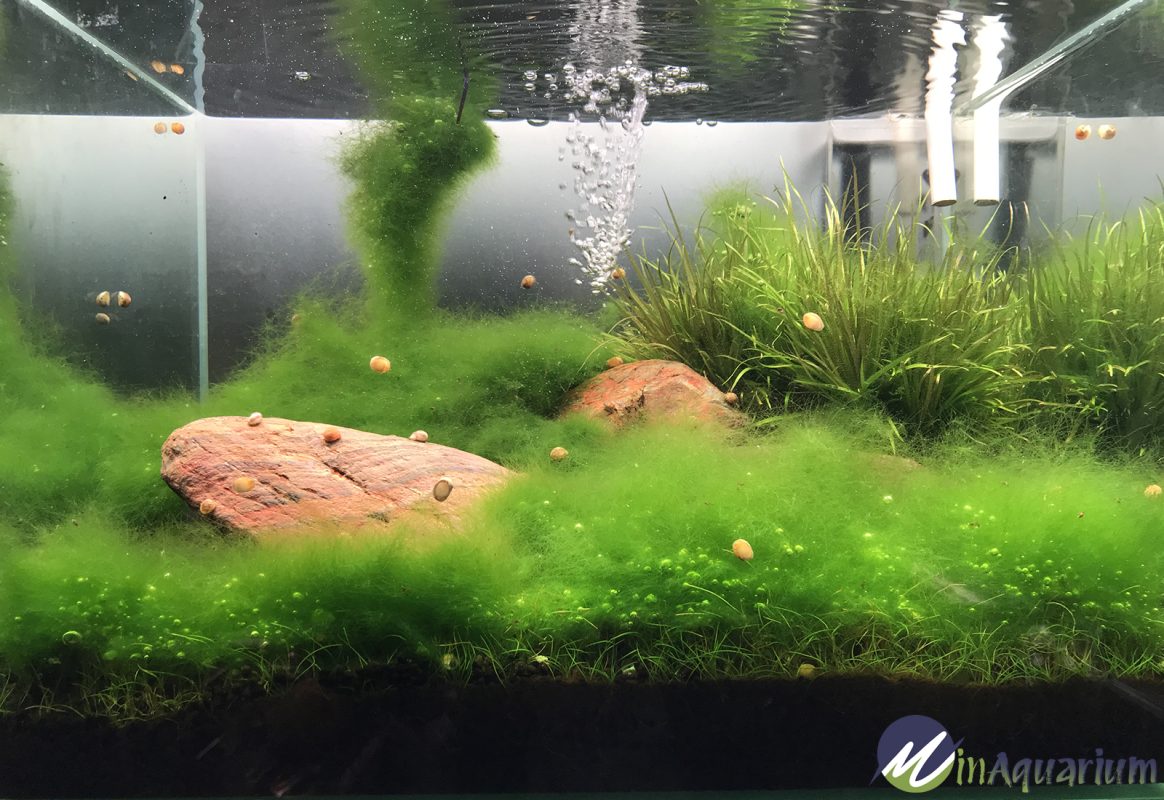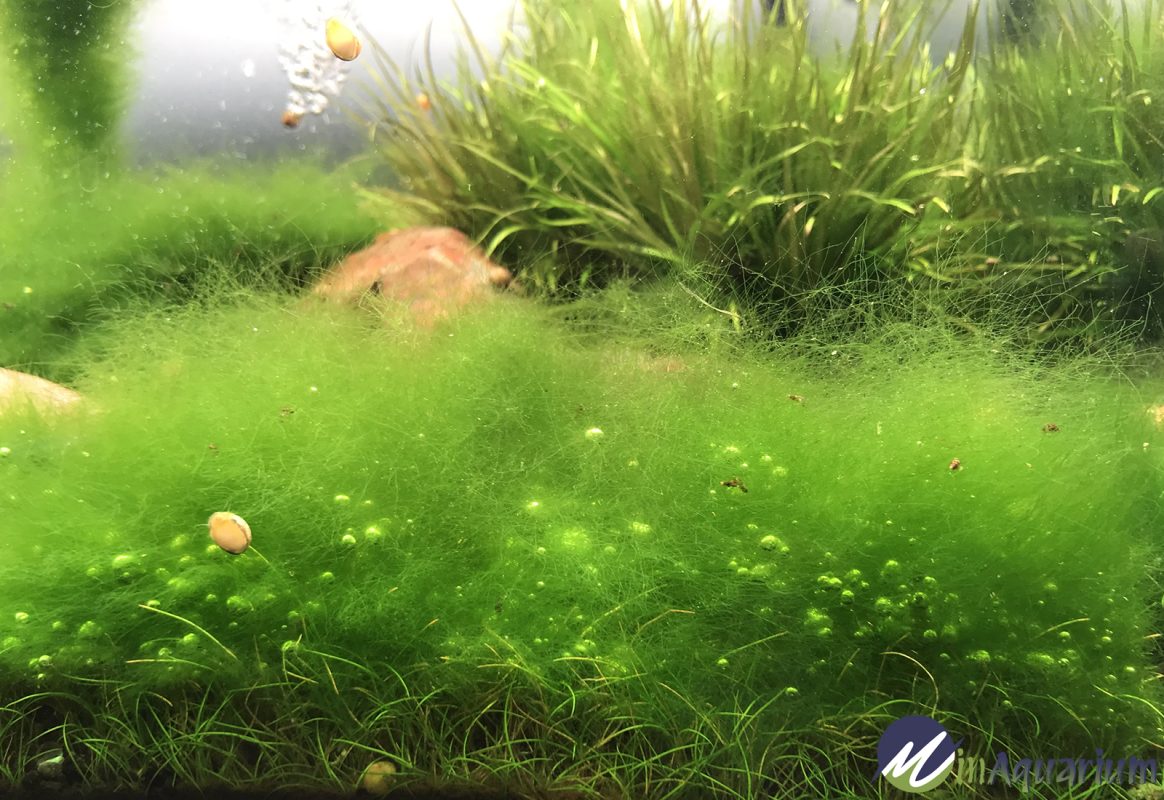Blogs
Algae in Aquariums | A Comprehensive Guide for Prevention and Management
Algae in aquariums can be both an aesthetically unpleasing nuisance and a hindrance to aquatic life. Understanding the causes, types, and effective management techniques is essential for maintaining a thriving aquarium ecosystem. This comprehensive guide provides in-depth insights into the complexities of algae growth, empowering you with the knowledge to effectively manage and prevent this common aquarium challenge.
Causes of Algae Growth
1. Nutrient Imbalance:
- High Phosphates: Excessive phosphates often result from fish waste and decaying plant matter. Phosphates support rapid algae growth.
- High Nitrates: Nitrates, a byproduct of biological processes, provide nutrients for algae to thrive. Regular water changes help control nitrate levels.
- High Silicates: Silicates contribute to diatom algae blooms. Tap water can be a significant source of silicates. Consider using a silicate-removing filter.
2. Excessive Lighting:
- Duration: Long lighting hours (over 8-10 hours) stimulate algae growth. Adjust lighting schedules to promote plant growth over algae.
- Intensity: Bright lighting accelerates photosynthesis, providing energy for algae to proliferate. Shade aquarium plants to reduce light intensity.
Types of Aquarium Algae

1. Brown Diatom Algae:
- Characteristics: Golden-brown coating on substrates and plants.
- Causes: High levels of phosphates and silicates in new or unbalanced aquariums.
- Management: Introducing nutrient-consuming plants (e.g., water sprite), adding algae-eating organisms (e.g., otocinclus catfish).
2. Black Beard Algae:
- Characteristics: Dark, brush-like strands that adhere to plants, stones, and decorations.
- Causes: Poor CO2 distribution or deficiency, high light intensity.
- Management: Use a liquid carbon additive, address CO2 levels, increase water flow, remove heavily infested areas.
3. Green Water Algae:
- Characteristics: Free-floating algae that gives the water a green tint.
- Causes: Poor water quality (e.g., ammonia spikes, low CO2), overfeeding.
- Management: Use a UV filter, diatom filter, regular water changes, reduce feeding frequency.
Managing Algae Growth
1. Nutrient Control:
- Regular Water Changes: Replace a portion of aquarium water (20-25% weekly) to dilute nutrients.
- Proper Feeding: Avoid overfeeding fish. Use automatic feeders or adjust feeding quantities.
- Biological Filtration: Establish and maintain a robust colony of beneficial bacteria to break down organic waste, reducing nutrient levels.
2. Lighting Optimization:
- Duration: Adjust lighting hours to promote plant growth (6-8 hours daily).
- Intensity: Shade plants and avoid placing the aquarium in direct sunlight.
- Light Color: Use full-spectrum lights with a natural spectrum for balanced growth.
Algae Removal Methods
1. Erythromycin for Blue-Green Algae:
- Effectiveness: Antibiotic treatment specifically effective against blue-green algae.
- Administration: Follow dosage instructions carefully, as overdosage can harm fish.
2. Regular Plant Cleaning:
- Manual Removal: Use a soft brush or algae scraper to gently remove algae from plant leaves.
- Hydrogen Peroxide Solution: Dip heavily infested plants in a diluted hydrogen peroxide solution (1:20).
3. Diatom Filter:
- Mechanism: A specialized filter with fine media that traps algae cells and removes them from the water column.
- Benefits: Effective in controlling green water algae.
Frequently Asked Questions (FAQs)
1. Why is my aquarium suddenly full of algae?
- Answer: Sudden nutrient increases or changes in lighting conditions can trigger algae blooms.
2. Can algae harm my fish?
- Answer: Excessive algae can outcompete plants for nutrients and deplete oxygen levels in the aquarium, potentially affecting fish health.
3. Is it possible to completely eliminate algae from my aquarium?
- Answer: Algae are naturally present in aquatic environments. The goal is to maintain a balanced aquarium ecosystem where algae growth is controlled.
4. How often should I clean my aquarium to prevent algae?
- Answer: Regular cleaning (weekly partial water changes and gravel vacuuming) helps remove excess nutrients and algae buildup.
5. Are there natural ways to manage algae?
- Answer: Introducing nutrient-consuming plants (e.g., fast-growing stem plants) and algae-eating creatures (e.g., snails, shrimp) can help control algae growth naturally.
Conclusion
Managing algae in aquariums requires a multifaceted approach that addresses nutrient control, lighting optimization, and effective removal methods. By understanding the causes, types, and management techniques outlined in this comprehensive guide, you can effectively prevent and control algae growth, ensuring a healthy and aesthetically pleasing aquarium ecosystem.
Key Takeaways:
- Nutrient imbalance and excessive lighting contribute to algae blooms.
- Different algae types have distinct characteristics and causes.
- Regular water changes, proper feeding, and biological filtration are crucial for nutrient control.
- Adjust lighting duration and intensity to promote plant growth over algae.
- Erythromycin, regular plant cleaning, and diatom filters are effective algae removal methods.
- Natural solutions, such as fast-growing plants and algae-eating organisms, can supplement algae management.
- Maintaining a balanced aquarium ecosystem is essential for effective algae control and prevention. control its growth by improving CO2 distribution and increasing water movement.
5. Is brown algae normal in a new aquarium?
- Yes, diatom algae growth is common during the initial cycling stages of a new aquarium.
Conclusion
Managing algae in aquariums is an ongoing endeavor that requires vigilance and a holistic approach. By addressing the root causes, employing effective control methods, and maintaining a healthy ecosystem, you can effectively prevent excessive algae growth and ensure a thriving aquatic environment for your valued fish and plants.
Key Takeaways
- Algae growth is influenced by nutrient balance, lighting, water quality, and biological factors.
- Regular water changes, balanced fertilization, and controlled lighting are crucial for algae management.
- Biological control with algae-eating animals and chemical treatment can complement manual removal and other measures.
- Understanding the specific types of algae present and their growth conditions aids in targeted control strategies.
- Maintaining a balanced aquarium ecosystem is the foundation for long-term algae management success.

